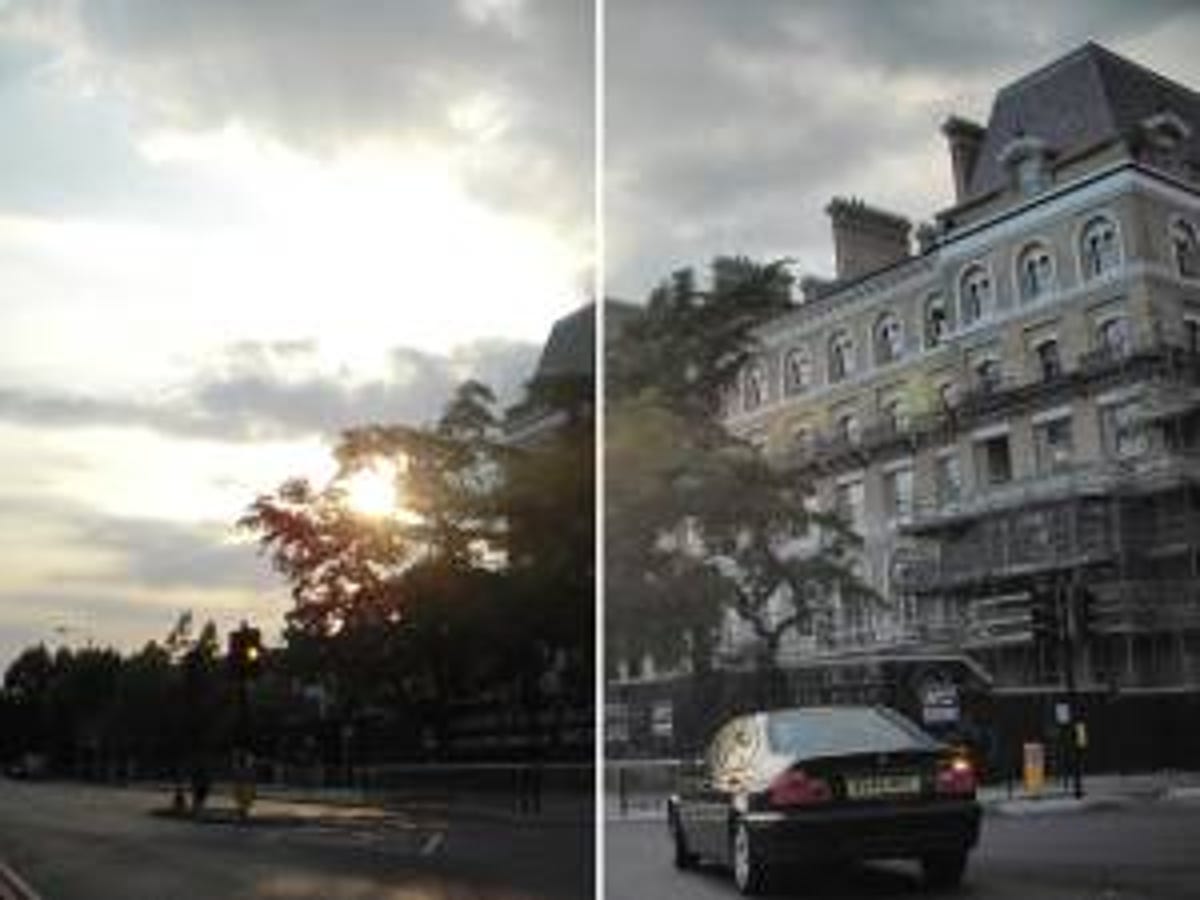 Why You Can Trust CNET
Why You Can Trust CNET Nikon Coolpix S52c review: Nikon Coolpix S52c
We've often wondered why cameras don't come equipped with wireless transfer as standard, especially as Bluetooth and, increasingly, Wi-Fi are ubiquitous in mobile phones. The Nikon Coolpix S52c bucks this trend -- it's a 9-megapixel snapper that allows for wireless email, upload and back-up of images
We've often wondered why cameras don't come equipped with wireless transfer as standard, especially as Bluetooth and, increasingly, Wi-Fi are ubiquitous in mobile phones. The Nikon Coolpix S52c bucks this trend -- it's a 9-megapixel snapper that allows for wireless email, upload and back-up of images. It's available now, for around £200.
The Good
The Bad
The Bottom Line
Design
The S52c packs a gigantic 76mm (3-inch) LCD screen in a metal frame. Nikon calls the colour purplish-black, although everybody we've shown it to thinks it's brown.
It has a very similar curved profile to the sleek S51c, which undulates at the front from right to left. This is strange, because conventional wisdom says cameras should be chunkier on the left side for the right hand to grip. The smooth face and absence of anything for the thumb to find purchase on at the back mean that one-handed shooting can be a slippery affair. One-handed shooting is important on cameras such as this, with the lens at the top left, because two-handed shooting increases the likelihood of fingers straying into the frame.
The zoom rocker pad is too small for our big thumbs, but isn't too jumpy. Other buttons include the usual mode and menu buttons, playback toggle and delete button. There are dedicated buttons on the top for face detection and email.
We do like Nikon's scroll wheels, which have the right combination of nippiness and subtle control. It also doubles as a clickpad for access to the usual options, such as flash, timer and macro. The wheel can be used to type in email addresses and other information, by zipping swiftly around an onscreen Qwerty keyboard.
Features
The S52c's big selling point is its Wi-Fi connectivity, allowing pictures to be transferred via email or upload. This is such a great idea we wonder why it isn't in every camera. There are some limits to what the S52c can do, however. For example, it won't work with our office Wi-Fi or some public connections because there is no browser to view and agree to terms and conditions. Essentially, the camera works best when brought back to your home Wi-Fi, as public access is hit-and-miss. It also only integrates directly with Nikon's My Picturetown photo-sharing site.
There's nothing wrong with My Picturetown, which allows you to share easily with family and friends, but Picasa and Flickr users may not be keen to switch over. You can use email to upload to blogs or other picture sites that support email upload, such as Flickr. The really clever part is that emails can be queued until you are in Wi-Fi range and, even better, the camera can be set up to wirelessly backup photos automatically when recharging at the end of a shooting session. If, like us, you often wind up with full memory cards that you always mean to upload but never quite get round to, this is a godsend.
Optical vibration reduction and face detection that finds up to 12 faces are also included. Other features are less exciting, such as a standard 3x zoom lens with a wide angle of 38mm, equivalent to a 35mm film camera.
The interface could be more intuitive, with the mode and menu buttons being rather interchangeable. There are other issues, such as the fact that the delete button only allows you to bin one image at a time, and to delete more than one you have to go into the menus.
Performance
The S52c takes a good three seconds to power up and take a picture,
with the screen coming on but the camera not ready to shoot until the
onscreen symbols appear a moment later. Autofocus is reasonably nimble
except in low light, and face detection does well to cope with even
moving subjects.
Barrel distortion is an issue in the non-protruding lens. It's mainly an issue if photographing patterns, such as a brick wall, but there is a distinct curve to straight lines closer to the camera along the bottom of the frame.
In playback mode, the face-detection button doubles as a D-lighting feature. This pulls detail from darker areas, but at the cost of increased noise in lightened areas and not really doing much with blown highlights.

Burst mode, accessed by a wander through the menu rather than a dedicated button, is pretty decent. It fires ten shots, in an average of 8 to 10 seconds, but we found the number of frames per second varied enormously. At one point the strangely mercurial camera stunned us by firing five shots in one second -- only to take nine seconds over the next five -- but we were unable to duplicate that result.
Conclusion
Since reviewing the S51c, we've become more positive about Wi-Fi
coverage, even if that varies massively depending on where you live.
Our opinion of these models as cameras hasn't changed much, though: the
Nikon Coolpix S52c, like its predecessor, is a fairly average
point-and-shoot.
It's certainly stylish, but we're not going to get really excited until Wi-Fi finds its way into a camera that has other things going on, such as the stunning Panasonic Lumix DMC-FX500. One to consider if your home is already Wi-Fi'd up, but we wouldn't rely public hotspots.
Edited by Nick Hide


